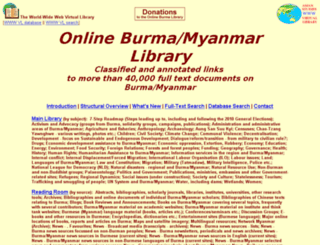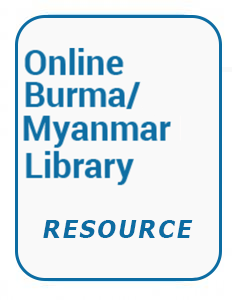Focal point
Location
The Online Burma/Myanmar Library (OBL) is a non-profit online research library mainly in English and Burmese serving academics, activists, diplomats, NGOs, CSOs, CBOs and other Burmese and international actors. It is also, of course, open to the general public. Though we provide lists of Burma/Myanmar news sources, the Library’s main content is not news but in-depth articles, reports, laws, videos and links to other websites, We provide a search engine (database and full text) and an alphabetical list of categories and sub-categories, but the Library is best accessed through browsing the 100 or so categories which lead to sub- and sub-sub categories. These tools should be used in combination.
Members:
Resources
Displaying 296 - 300 of 1151CASE STUDY ON LAND IN BURMA
Report Summary: "This case study has been produced in response to a request made to the Evidence on Demand Helpdesk. The objective of the request was to write a detailed case study on land tenure reform in a fragile and post-conflict state, Burma, and provide the reader with an understanding of how land tenure reform can work under the country’s particular social, political and economic conditions.
A political anatomy of land grabs
The phrase “land grab” has become common in Myanmar, often making front page news. This reflects the more open political space available to talk about injustices, as well as the escalating severity and degree of land dispossession under the new government.
But this seemingly simple two-word phrase is in fact very complex and opaque. It thus deserves greater clarity in order to better understand the deep layers of meaning to farmers in the historical political context of Myanmar.
Ceasefires and Durable Solutions in Myanmar: a lessons learned review.....Commentary: IDPs and refugees in the current Myanmar peace process
Over six decades of ethnic conflict in Myanmar have generated displacement crises just as long. At the time of writing there are an estimated 640,747 internally displaced persons (IDPs) in Myanmar, and 415,373 refugees originating from the country.However, these figures are not fully indicative of levels of forced migration, as obtaining reliable data for IDPs remains difficult, while millions of regular and irregular migrants have also left the country, often fleeing similar conditions to those faced by documented refugees and IDPs.
Customary Land Management and Legal Frameworks: Experiences from Around the World - Burmese (မြန်မာဘာသာ)
A Report to Enhance Discussions about
Customary Land Rights in Burma.....This purpose of this paper is to present a brief summary of the
issues and current
situations facing ethnic and indigenous communities around the
world that are
using a customary rights framework to manage their land and natural resources.
By outlining these experiences, ethnic groups in Burma will be
able to better understand their own context and
possibilities as they struggle to gain control over
Customary Land Management and Legal Frameworks: Experiences from Around the World (English)
A Report to Enhance Discussions about Customary Land Rights in Burma.....This purpose of this paper is to present a brief summary of the
issues and current
situations facing ethnic and indigenous communities around the
world that are
using a customary rights framework to manage their land and natural resources.
By outlining these experiences, ethnic groups in Burma will be
able to better understand their own context and
possibilities as they struggle to gain control over
their lands during this transitional time. While examining how


